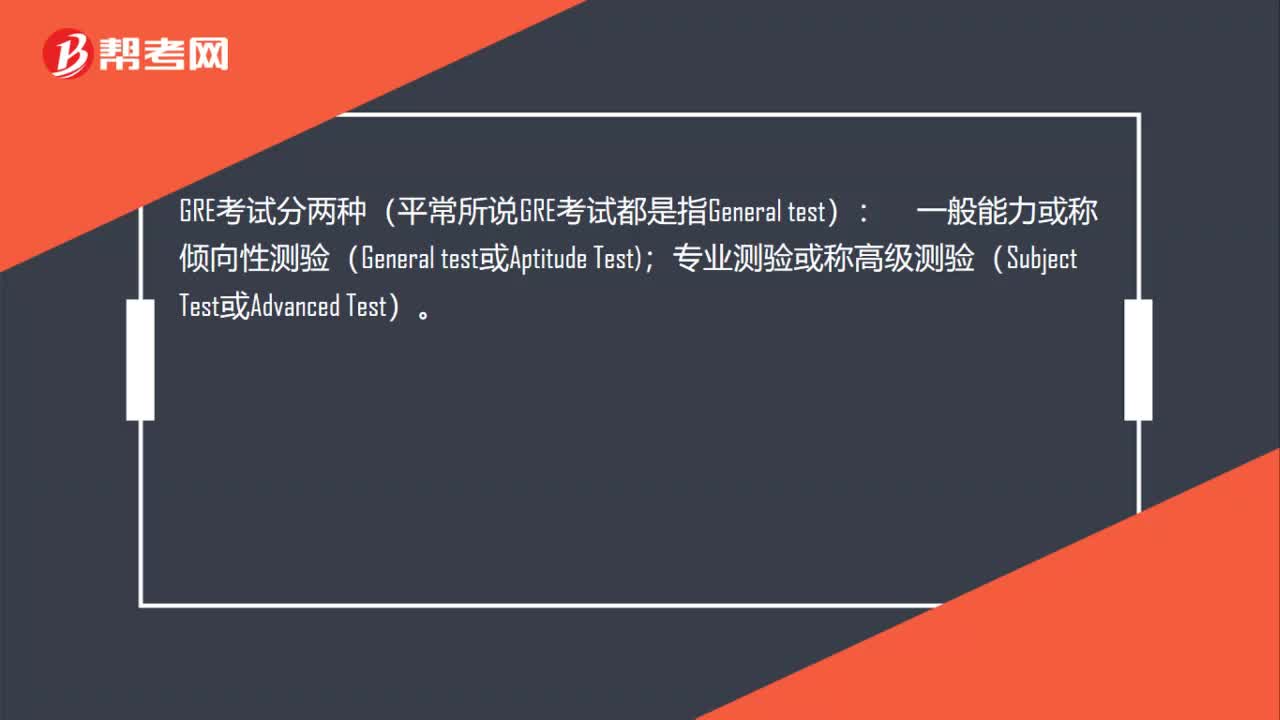
下载亿题库APP
联系电话:400-660-1360

下载亿题库APP
联系电话:400-660-1360

请谨慎保管和记忆你的密码,以免泄露和丢失

请谨慎保管和记忆你的密码,以免泄露和丢失

在GRE考试备考过程中,好的习题能够达到事半功倍的效果。下面是帮考网带来的历年真题练习内容,供大家学习。
Classical physics defines the vacuum as a state of absence: a vacuum is said to exist in a region of space if there is nothing in it. In the quantum field theories that describe the physics of elementary particles, the vacuum becomes somewhat more complicated. Even in empty space, particles can appear spontaneously as a result of fluctuations of the vacuum. For example, an electron and a positron, or antielectron, can be created out of the void. Particles created in this way have only a fleeting existence; they are annihilated almost as soon as they appear, and their presence can never be detected directly. They are called virtual particles in order to distinguish them from real particles, whose lifetimes are not constrained in the same way, and which can be detected. Thus it is still possible to define that vacuum as a space that has no real particles in it.
One might expect that the vacuum would always be the state of lowest possible energy for a given region of space. If an area is initially empty and a real particle is put into it, the total energy, it seems, should be raised by at least the energy equivalent of the mass of the added particle. A surprising result of some recent theoretical investigations is that this assumption is not invariably true. There are conditions under which the introduction of a real particle of finite mass into an empty region of space can reduce the total energy. If the reduction in energy is great enough, an electron and a positron will be spontaneously created. Under these conditions the electron and positron are not a result of vacuum fluctuations but are real particles, which exist indefinitely and can be detected. In other words, under these conditions the vacuum is an unstable state and can decay into a state of lower energy; i.e., one in which real particles are created.
The essential condition for the decay of the vacuum is the presence of an intense electric field. As a result of the decay of the vacuum, the space permeated by such a field can be said to acquire an electric charge, and it can be called a charged vacuum. The particles that materialize in the space make the charge manifest. An electric field of sufficient intensity to create a charged vacuum is likely to be found in only one place: in the immediate vicinity of a superheavy atomic nucleus, one with about twice as many protons as the heaviest natural nuclei known. A nucleus that large cannot be stable, but it might be possible to assemble one next to a vacuum for long enough to observe the decay of the vacuum. Experiments attempting to achieve this are now under way.
1. Which of the following titles best describes the passage as a whole?
(A) The Vacuum: Its Fluctuations and Decay
(B) The Vacuum: Its Creation and Instability
(C) The Vacuum: A State of Absence
(D) Particles That Materialize in the Vacuum
(E) Classical Physics and the Vacuum
2. According to the passage, the assumption that the introduction of a real particle into a vacuum raises the total energy of that region of space has been cast into doubt by which of the following?
(A) Findings from laboratory experiments
(B) Findings from observational field experiments
(C) Accidental observations made during other experiments
(D) Discovery of several erroneous propositions in accepted theories
(E) Predictions based on theoretical work
3. It can be inferred from the passage that scientists are currently making efforts to observe which of the following events?
(A) The decay of a vacuum in the presence of virtual particles
(B) The decay of a vacuum next to a superheavy atomic nucleus
(C) The creation of a superheavy atomic nucleus next to an intense electric field
(D) The creation of a virtual electron and a virtual positron as a result of fluctuations of a vacuum
(E) The creation of a charged vacuum in which only real electrons can be created in the vacuum’s region of space
4. Physicists’ recent investigations of the decay of the vacuum, as described in the passage, most closely resemble which of the following hypothetical events in other disciplines?
(A) On the basis of data gathered in a carefully controlled laboratory experiment, a chemist predicts and then demonstrates the physical properties of a newly synthesized polymer.
(B) On the basis of manipulations of macroeconomic theory, an economist predicts that, contrary to accepted economic theory, inflation and unemployment will both decline under conditions of rapid economic growth.
(C) On the basis of a rereading of the texts of Jane Austen’s novels, a literary critic suggests that, contrary to accepted literary interpretations. Austen’s plots were actually metaphors for political events in early nineteenth-century England.
(D) On the basis of data gathered in carefully planned observations of several species of birds, a biologist proposes a modification in the accepted theory of interspecies competition.
(E) On the basis of a study of observations incidentally recorded in ethnographers’ descriptions of non-Western societies, an anthropologist proposes a new theory of kinship relations.
5. According to the passage, the author considers the reduction of energy in an empty region of space to which a real particle has been added to be
(A) a well-known process
(B) a frequent occurrence
(C) a fleeting aberration
(D) an unimportant event
(E) an unexpected outcome
6. According to the passage, virtual particles differ from real particles in which of the following ways?
I. Virtual particles have extremely short lifetimes.
II. Virtual particles are created in an intense electric field.
III. Virtual particles cannot be detected directly.
(A) I only
(B) II only
(C) III only
(D) I and II only
(E) I and III only
7. The author’s assertions concerning the conditions that lead to the decay of the vacuum would be most weakened if which of the following occurred?
(A) Scientists created an electric field next to a vacuum, but found that the electric field was not intense enough to create a charged vacuum.
(B) Scientists assembled a superheavy atomic nucleus next to a vacuum, but found that no virtual particles were created in the vacuum’s region of space.
(C) Scientists assembled a superheavy atomic nucleus next to a vacuum, but found that they could not then detect any real particles in the vacuum’s region of space.
(D) Scientists introduced a virtual electron and a virtual positron into a vacuum’s region of space, but found that the vacuum did not then fluctuate.
(E) Scientists introduced a real electron and a real positron into a vacuum’s region of space, but found that the total energy of the space increased by the energy equivalent of the mass of the particles.
参考答案:
A E B B E E C
以上就是帮考网今日为大家分享的真题练习,小伙伴们赶紧学习起来!
 37
37GRE考试有几种类型?:GRE考试有几种类型?GRE考试分两种(平常所说GRE考试都是指General test):一般能力或称倾向性测验(General test或Aptitude Test;专业测验或称高级测验(Subject。Test或Advanced Test)
 44
44GRE考试一般要准备多久?:GRE考试一般要准备多久?这个因人而异。如果已经考过托福基础比较好的话,复习一两个月也能考到比较满意的分数。如果基础不是很好,就得集中时间大量突破,兵贵速不贵久。GRE的战线拖得太长也不好,后期会很疲累,一般来说六至八个月可以了,后面多加两个月可以增加信心分。
 38
38GRE考试需要几个小时?:GRE考试需要几个小时?GRE General考试需时三个小时,共四个部分,全部为选择题,不实行答错倒扣分的方法。四部分的考试内容有两部分属于词汇项(Verbal),两部分属于数学项(Quantitative)。